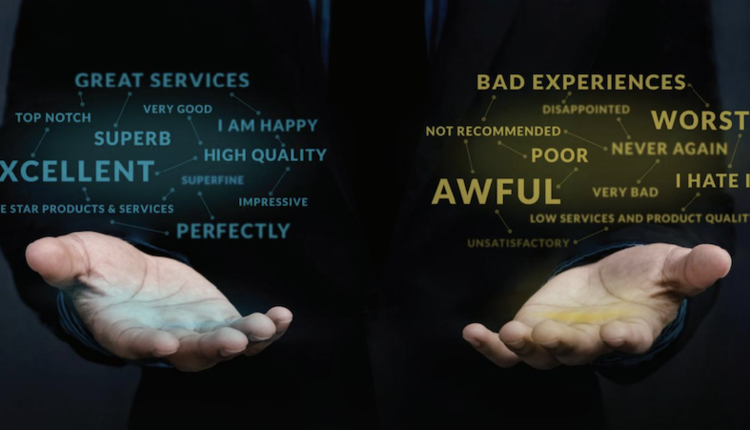
Regardless of your organization’s size, shape or go-to-market strategy, you are likely feeling the pinch of this stubborn economy. Of course, you remain focused on delivering value to your customers, but operational efficiency clings to your every decision like a wet cat to a shower curtain. Many firms have found that strategically outsourcing print and document services continues to drive value to both the bottom and top lines of their business.
The rapidly maturing managed print services (MPS) ecosystem has undergone quite a few changes in the last five years, and as partners’ capabilities have advanced, so have customers’ expectations. We found seven key trends customers want their partners to know. Do any of these ring true for you?
1. It’s personal.
When engaging partners to provision services, the focus shifts from having to manage discreet components to the ability to simply consume the result. Naturally, reliability is key in this equation and has remained the leading selection criterion in choosing partners.
Decision makers have increasingly cited the importance of a partner’s flexibility, willingness to customize and ability to meet their specific requirements. While many partners are busy scaling programs to address the growing market, remind your partners not to forget that they need to personalize your experience.
2. Price is important.
As program capabilities have matured to match customer demand, price has been steadily gaining ground as a leading selection criterion. In fact, it is now almost as important as reliability in gaining the final nod. This certainly signals maturation in the market. However, if price has become a key point of distinction in programs, what does this say about your partners’ ability to deliver significant value to your organization? In other words, price is important, but don’t you want your partners to also focus on creating additional value, reinforcing your decision to partner in these uncertain times.
3. Can you see the forest for the trees?
For those who are engaged in or evaluating MPS, 63% said MPS ranks among their top three priorities. This tells us that MPS is a strategic solution—it is often part of a larger set of initiatives to drive value into the organization.
What your partners must remember is that MPS doesn’t just deliver cost savings—it must also drive improved front-line benefits for you. If your partners fail to see how MPS fits into a larger framework of value generation, they will ultimately fail in their role as trusted advisors to you.
4. Faster, better, shorter.
We have watched the steady decline of average contract terms. The typical MPS contract often ranged up to five years in the past. Today, your partner must balance his or her own profitability against your desired outcome. Decision makers understand their partners are in business to make a profit, so it’s important that partners are candid about their ability to deliver. Because you are facing daunting challenges in delivering to your own customers, your partner must enable you to achieve desired outcomes faster, better and in a shorter amount of time than in years past.
"Photizo Group interviewed thousands of decision makers throughout the world over the last five years, asking them about their managed print services (MPS) engagements. The results? Read the full report, “2012 Decision Maker Tracking Study for North America."
5. Take it all, or take a hike.
Of those organizations that have central reprographics departments (CRD), nine in 10 of these decision makers have unified their CRD and MPS contracts. It’s important that your partner must be able to think in terms of “both/and,” not “either/or.” In other words, if your partner can’t take it all, take a hike.
6. You’re getting this but still missing that.
When asked about how well partners are delivering in key engagement functions, decision makers were clear to say that their partners are doing just fine with the basics. Things like response time and assessment performance ranked very well. However, there were obvious gaps in partners’ ability to manage change as well as create and enforce print policies. Clearly, you need your partners to step beyond the typical assortment of device-related support activities and really focus on accelerating real value in MPS engagements.
7. Building the value platform begins with MPS.
Ideally, MPS engagements establish a foundation that can be leveraged to build upon and enhance business processes. In other words, many decision makers seek value beyond comprehensive fleet management and standardized cost savings programs—you want advanced benefits to drive top-line results and, ultimately, deliver greater value to your customers.
However, only about one in four decision makers we interviewed indicated that they had realized any advanced benefits in their MPS engagements. We continue to see this gap in the market as a great opportunity for your partners to step up to the plate and help you grapple with the massive amounts of information in this rapidly changing landscape.
Let’s be fair, it’s far easier to recognize these trends than it is to successfully achieve the results (or even know where to begin). While some MPS providers have begun the journey to help their clients capitalize on these trends, your side of the partnership is equally vital. You must ensure you open the door and ask your partner in for a candid dialogue. You bring answers to “what” and “why” you need to achieve certain goals; your partner is there to help you unlock “how” to execute. To that end, be sure you pick a partner that is willing to lean in hard and listen well. If you don’t start with that, you really won’t like where their bad habit leads.
KEN STEWART leads the MPS Advisory Service (MAS) at Photizo Group, where he advises clients who are in the process of transforming their companies into managed services providers. A decorated former U.S. Marine, Mr. Stewart has successfully navigated the business and technology landscapes for more than 15 years, advising businesses on how to align people, processes and technology to achieve world-class results. His primary set of expertise centers around information technology, change management and managed services strategy. Contact him at kstewart@photizogroup.com.
Tweet












